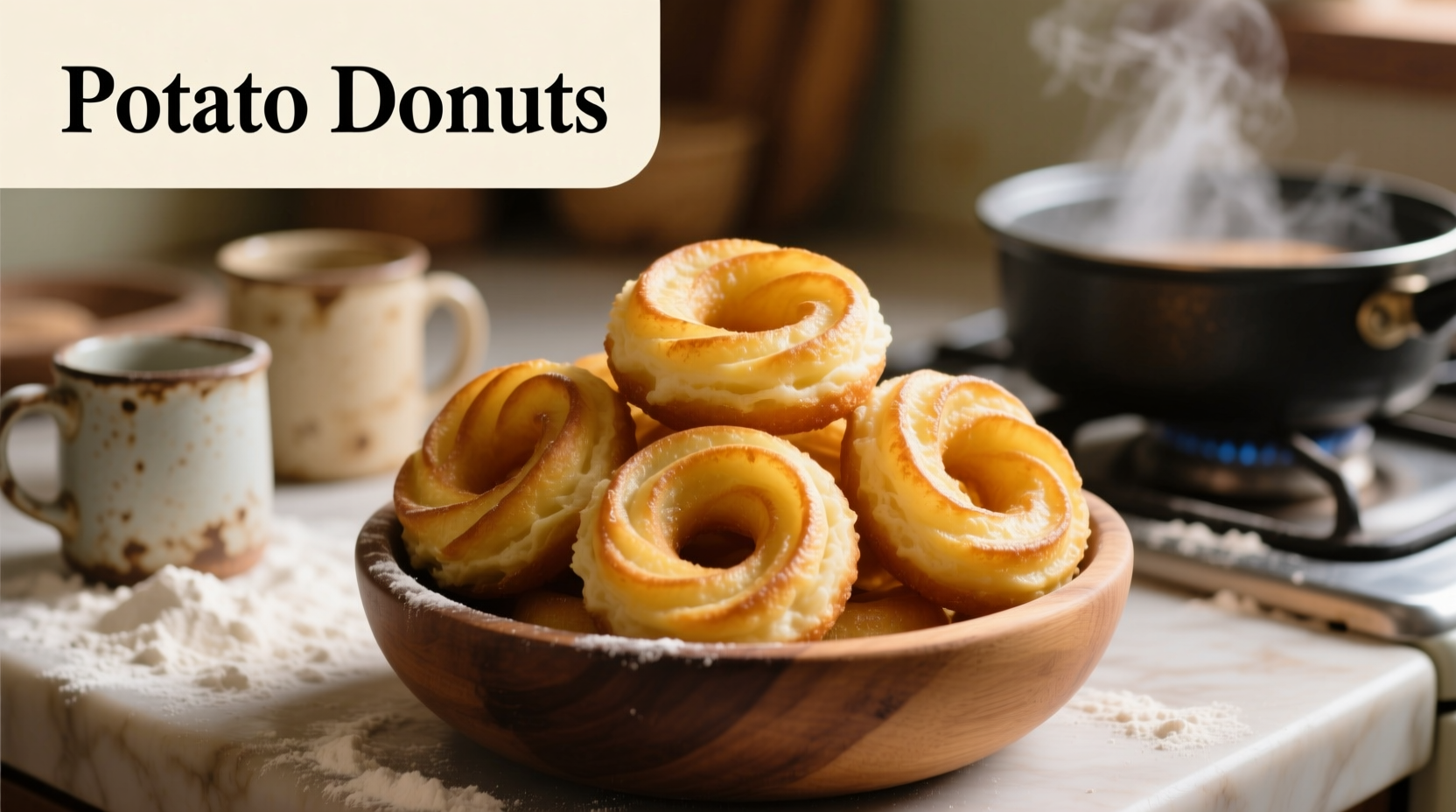Discover why professional bakers and home cooks alike are turning to potato donuts for superior texture and flavor. Unlike regular donuts that stale within hours, potato donuts maintain their delicate crumb for days while delivering a light, airy texture that regular flour-based recipes struggle to achieve.
The Secret Behind Superior Donut Texture
Potato donuts aren't just a regional specialty—they represent a clever application of food science. When potato (either as mashed potato or potato starch) is incorporated into donut dough, it interacts with gluten in remarkable ways. The starch molecules absorb and retain moisture more effectively than wheat flour alone, while the natural sugars in potatoes promote better browning and flavor development during frying.
According to research from the USDA Agricultural Research Service, potato starch has unique water-binding properties that help maintain texture in baked goods. This scientific advantage explains why potato donuts resist staling up to 50% longer than their traditional counterparts.
| Characteristic | Potato Donuts | Traditional Donuts |
|---|---|---|
| Moisture retention | Excellent (stays moist 3-4 days) | Fair (stales within 24 hours) |
| Texture | Light, fluffy, tender crumb | Denser, more elastic |
| Shelf life | 3-4 days at room temperature | 12-24 hours before staling |
| Best potato type | Russet or Yukon Gold | N/A |
A Brief History of Potato Donuts
Potato donuts emerged from practical necessity during periods of potato surplus. In the early 20th century, New England faced abundant potato harvests with limited preservation methods. Resourceful home cooks began incorporating mashed potatoes into donut recipes, discovering the unexpected texture benefits.
By the 1930s, potato donuts had become a regional specialty throughout New England, with bakeries like Frankie's Donuts in Massachusetts making them a staple. During World War II rationing, potato donuts gained wider popularity as potatoes were less restricted than wheat flour.
Across the Pacific, Korean street food vendors developed their own version called Gamja-ppang (potato bread), which evolved into the popular Korean potato donut street food found in markets today. This parallel development demonstrates how food science principles naturally emerge across cultures when addressing similar culinary challenges.

Why Potato Works Better Than You Think
The magic happens at the molecular level. Potato starch granules swell at lower temperatures than wheat starch, creating a more tender structure. Additionally, potatoes contain natural enzymes that help break down some gluten, resulting in a more delicate crumb.
Professional bakers at the King Arthur Baking Company have confirmed through extensive testing that the ideal ratio is 1 part mashed potato to 3 parts flour by weight. Exceeding this ratio can make donuts too dense, while using less won't deliver the full moisture-retention benefits.
Perfect Potato Donut Recipe
Creating exceptional potato donuts requires attention to potato preparation. The quality of your mashed potatoes directly impacts the final product:
- Potato preparation: Use russet or Yukon Gold potatoes, boiled until tender but not waterlogged. Rice them while hot to avoid gumminess.
- Dough hydration: Potato moisture content varies—adjust liquid ingredients accordingly. The dough should be soft but not sticky.
- Rising time: Potato dough rises faster due to natural sugars. Watch for visual cues rather than strict timing.
- Frying temperature: Maintain 350-360°F (175-180°C) for optimal absorption and texture.
Common Mistakes and Solutions
Even experienced bakers encounter challenges with potato donuts. Here's how to troubleshoot the most frequent issues:
- Dense texture: Usually caused by overmixing or using cold mashed potatoes. Mix just until combined and ensure potatoes are warm when incorporated.
- Oil absorption: If donuts soak up too much oil, your frying temperature is too low. Use a reliable thermometer and maintain consistent heat.
- Uneven browning: Potatoes contain natural sugars that caramelize quickly. Reduce oil temperature by 5-10 degrees if browning too fast.
- Dough too sticky: Potato moisture varies. Add flour sparingly, 1 tablespoon at a time, until proper consistency is reached.
Regional Variations Worth Trying
Potato donuts have evolved differently across cultures, each variation highlighting unique culinary approaches:
- New England style: Made with mashed potatoes, these donuts feature a subtle earthiness and exceptional moisture retention. Often served with a simple sugar coating.
- Korean Gamja-ppang: These street food favorites incorporate sweet potato for natural sweetness and vibrant color, often topped with seeds or nuts.
- Polish inspired: Some Eastern European variations use potato flour for a more delicate texture in yeast-raised donuts.
Storage and Serving Tips
One of potato donuts' greatest advantages is their extended freshness. Store them in an airtight container at room temperature for 3-4 days. Unlike traditional donuts that become rubbery when refrigerated, potato donuts actually maintain better texture at room temperature.
For best results when reheating, place donuts on a wire rack in a 300°F (150°C) oven for 3-4 minutes. This revives the texture without making them greasy. Avoid microwaving, which can create uneven texture.











 浙公网安备
33010002000092号
浙公网安备
33010002000092号 浙B2-20120091-4
浙B2-20120091-4